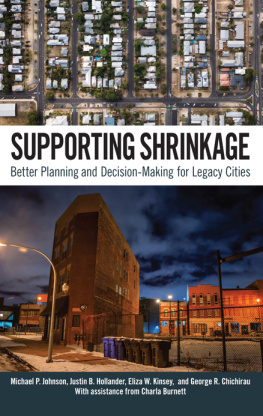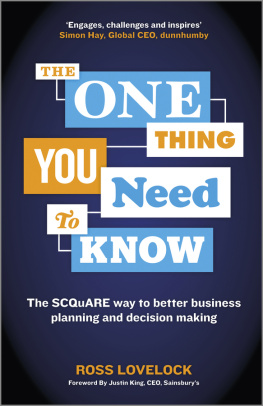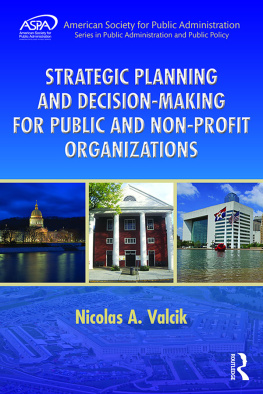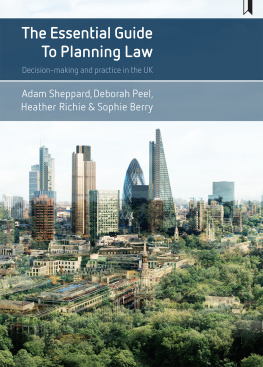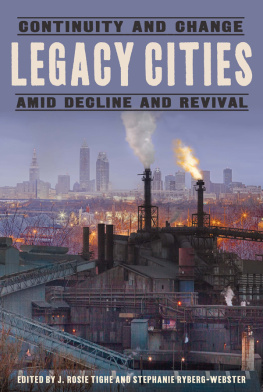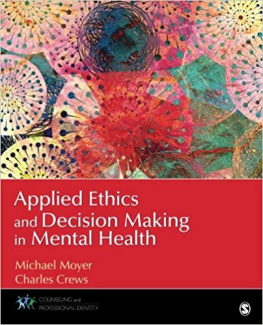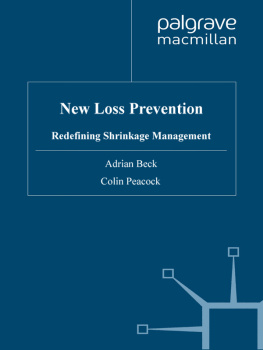SUPPORTING SHRINKAGE
SUPPORTING SHRINKAGE
Planning and Decision Making for Legacy Cities
Michael P. Johnson, Justin B. Hollander,
Eliza W. Kinsey, and George R. Chichirau
with Charla Burnett
Published by State University of New York Press, Albany
2021 State University of New York
All rights reserved
Printed in the United States of America
No part of this book may be used or reproduced in any manner without written permission. No part of this book may be stored in a retrieval system or transmitted in any form or by any means including electronic, electrostatic, magnetic tape, mechanical, photocopying, recording, or otherwise without the prior permission in writing of the publisher.
For information, contact State University of New York Press, Albany, NY
www.sunypress.edu
Library of Congress Cataloging-in-Publication Data
Names: Johnson, Michael P., author | Hollander, Justin B., author | Kinsey, Eliza W., author | Chichirau, George R., author.
Title: Supporting shrinkage / Michael P. Johnson, Justin B. Hollander, Eliza W. Kinsey, and George R. Chichirau.
Description: Albany : State University of New York Press, [2021] | Includes bibliographical references and index.
Identifiers: ISBN 9781438483450 (hardcover : alk. paper) | ISBN 9781438483474 (ebook)
Further information is available at the Library of Congress.
10 9 8 7 6 5 4 3 2 1
Contents
CHAPTER 1
Planning, Technology, and Shrinking Cities
CHAPTER 2
What Can Data and Technology Do for Shrinking Cities and Distressed Communities?
CHAPTER 3
Three Shrinking Cities: History, Practice, Data, and Technology
CHAPTER 4
Data and Modeling Preliminaries: An Application to Fall River, Massachusetts
CHAPTER 5
Shrinking City Data and Decision Modeling: Baltimore, Maryland
CHAPTER 6
Technology, Data, and Community-Building Where People Matter
CHAPTER 7
Lessons Learned: How Can Data, Models, and Technology Support Shrinking Cities and Distressed Communities?
Tables and Figures
Tables
Figures
Acknowledgments
T he research in this book was supported by The Abell Foundation, Decision Modeling Tool for Vacant Structure Demolition and Redevelopment, January 1 to December 31, 2013. We are grateful to the cooperation of the City of Flint Planning Division, Fall River Planning Department, and the Baltimore City Planning Department for ideas, data, interviews, and comments that made our research possible.
Our work benefitted greatly from the contributions of many research assistants over the course of this project: University of Massachusetts Boston students Merritt Hughes (PhD 17), Hyun-Jung Lee (PhD 18), Heather MacLean (MS 21), and Omobukola Usidame (PhD 18), and Tufts University student Jingyu Tu (MS 15). University of Massachusetts Boston Public Policy PhD students Jason Wright, Liz James, Shengli Chu and Jamie Lannon, and Tufts University Urban and Environmental Policy and Planning masters student Sarah Cohen served as editorial assistants.
We appreciate the detailed and thoughtful feedback of anonymous reviewers.
We thank our families, employers, and colleagues for their support and guidance.
CHAPTER 1
Planning, Technology, and Shrinking Cities
1.1 Introduction: Policy, Planning Context, and Book Goals
M unicipal decline or urban shrinkage has been the subject of extensive academic research In the United States, a relatively large number of cities and regions have experienced increased distress over the past two decades, according to measures relating to population and economic decline, or vacant and abandoned housing. These changes have significantly reduced the quality of life for residents: extreme examples include severely degraded infrastructure in Flint, Michigan, and social unrest in Baltimore, Maryland. Declining urban centers usually fall into two large categories: the legacy cities of the postindustrial regions of New England, the Mid-Atlantic, and the Midwest that have dealt with industrial transition and suburban flight for many decades now (Mallach and Brachman 2013), as well as cities in the Sunbelt that have borne the brunt of the post-2008 foreclosure crisis and related abandonment of housing in suburban and suburban-style subdivisions (Hollander 2011). These trends are not limited to the United States: cities in Europe, Asia, and Africa also confront decline and shrinkage (Stohr 2004).
The reverse of the coin is that many other cities have become increasingly attractive over the past decade, as millennials and baby boomers alike recognize the benefits of easily accessible jobs and cultural amenities associated with urban living (Wieckowski 2010; Frey 2014; Nielson 2014). A recent best-selling book by Fallows and Fallows (2018) has made a highly persuasive case for the social and economic value of smaller cities, even in decline. Recent U.S. Census data is relatively ambiguous, although it seems to indicate a moderate resurgence in suburban population growth rates as compared to traditional cores (Frey 2017). It is thus probably best to not oversell any one storyline regarding central city versus suburban growth, and overall trends of urban growth versus decline (even more so in the wake of the 2020 coronavirus crisis).
Community distress is usually a corollary of the dynamic of shrinking cities (Beauregard 2009). To provide an example, the Economic Innovation Group (2018) measures community distress using an index composed of seven equally weighted components:
the percentage of the adult population without a high school diploma;
the housing vacancy rate;
the percentage of adult nonelderly population not currently employed;
the poverty rate;
the median household income as a percent of the states median household income;
the percent annual change in the number of jobs; and
the percent annual change in the number of business establishments.
By comparing distress measures between 2007 and 2011, the depths of the Great Recession, and 2012 and 2016, an era of sustained economic recovery, the EIG found evidence of migration from distressed zip codes toward more prosperous ones (the bottom and top quintiles according to the Distressed Community Index). For troubled areas, this population shift resulted in a lag in jobs recovery and business creation, higher housing vacancy rates and educational attainment, and a greater proportion of majority-minority communitiesin brief, an even more concentrated degree of distress.
Vast and increasing inequality represents another particularly concerning trend in U.S. urban affairs. Studies have documented increasing gaps in income (Institute for Policy Studies 2018a), wealth (Institute for Policy Studies 2018b), household debt (Coibion et al. 2014), access to quality education (Semuels 2016), and life expectancy and other measures of physical, mental, and social well-being (Institute for Policy Studies 2018c; Centers for Disease Control and Prevention 2016). These gaps, which often cut across race, class, gender, and ethnicity lines, present structural barriers to opportunity for many Americans. In fact, a recent book (Harris and Curtis 2018) on the work of the 1968 Kerner Commission, which warned that the United States was moving toward two societies, one black, one whiteseparate and unequal, concluded, rather dispiritingly, that the social problems documented fifty years ago remain prevalent today.


